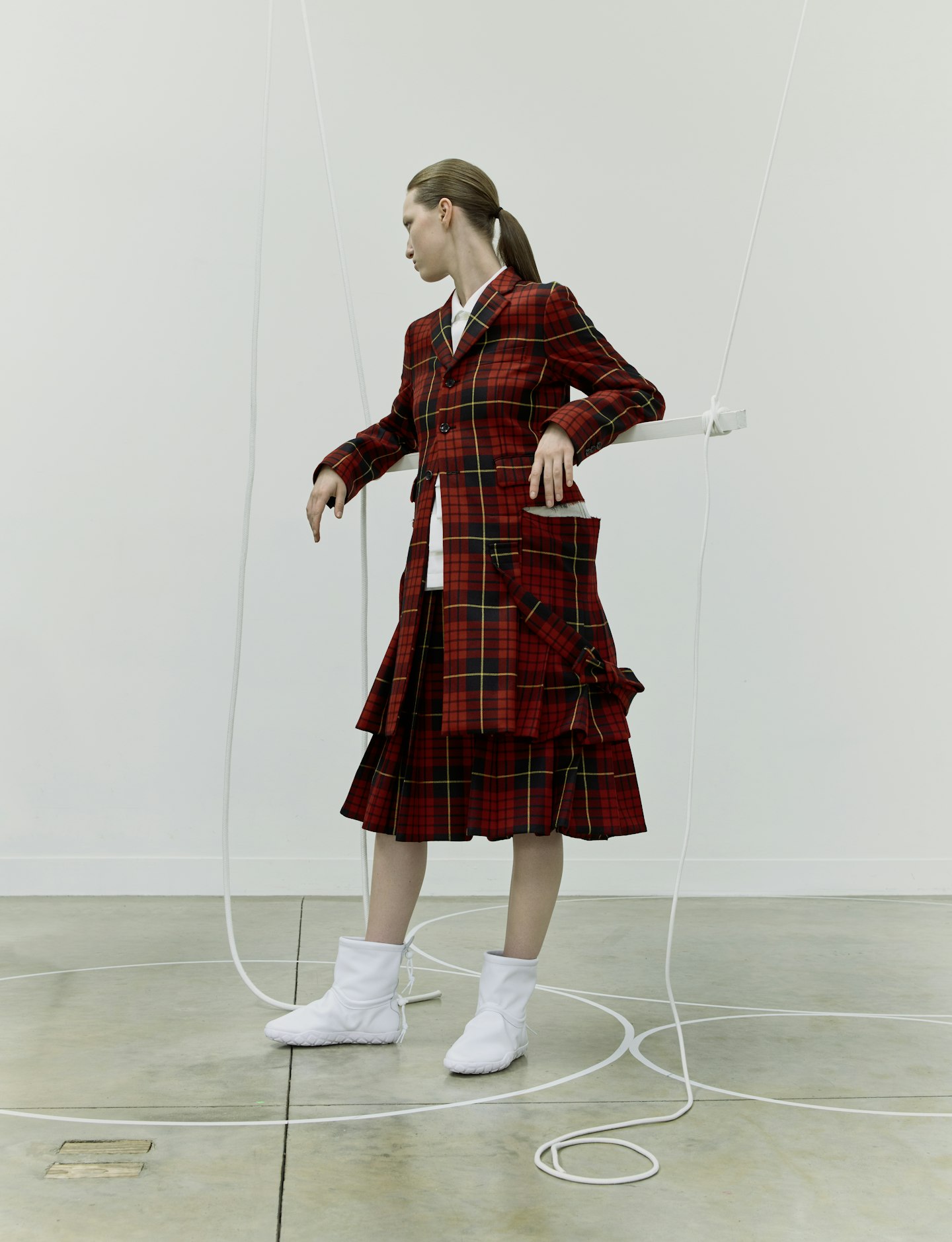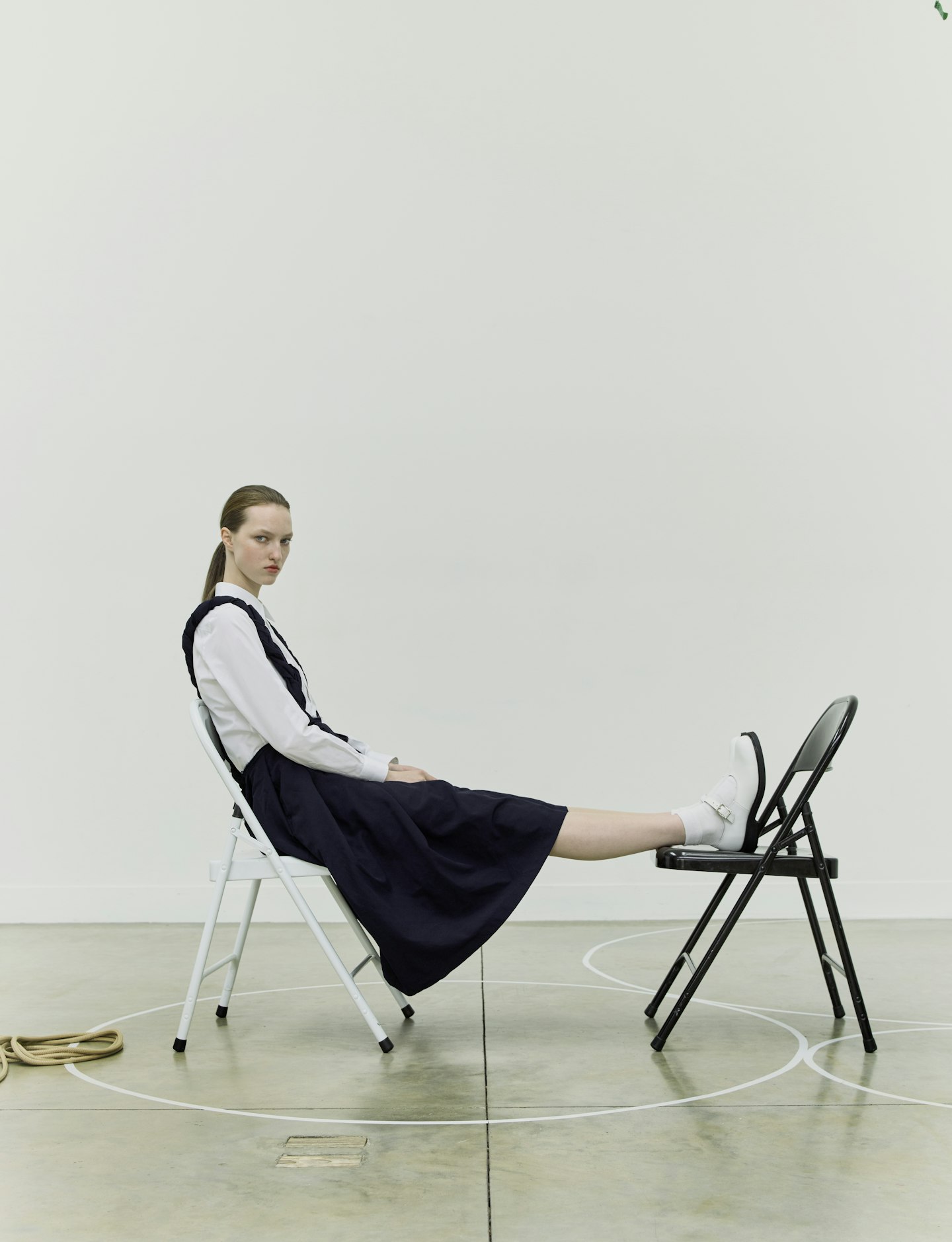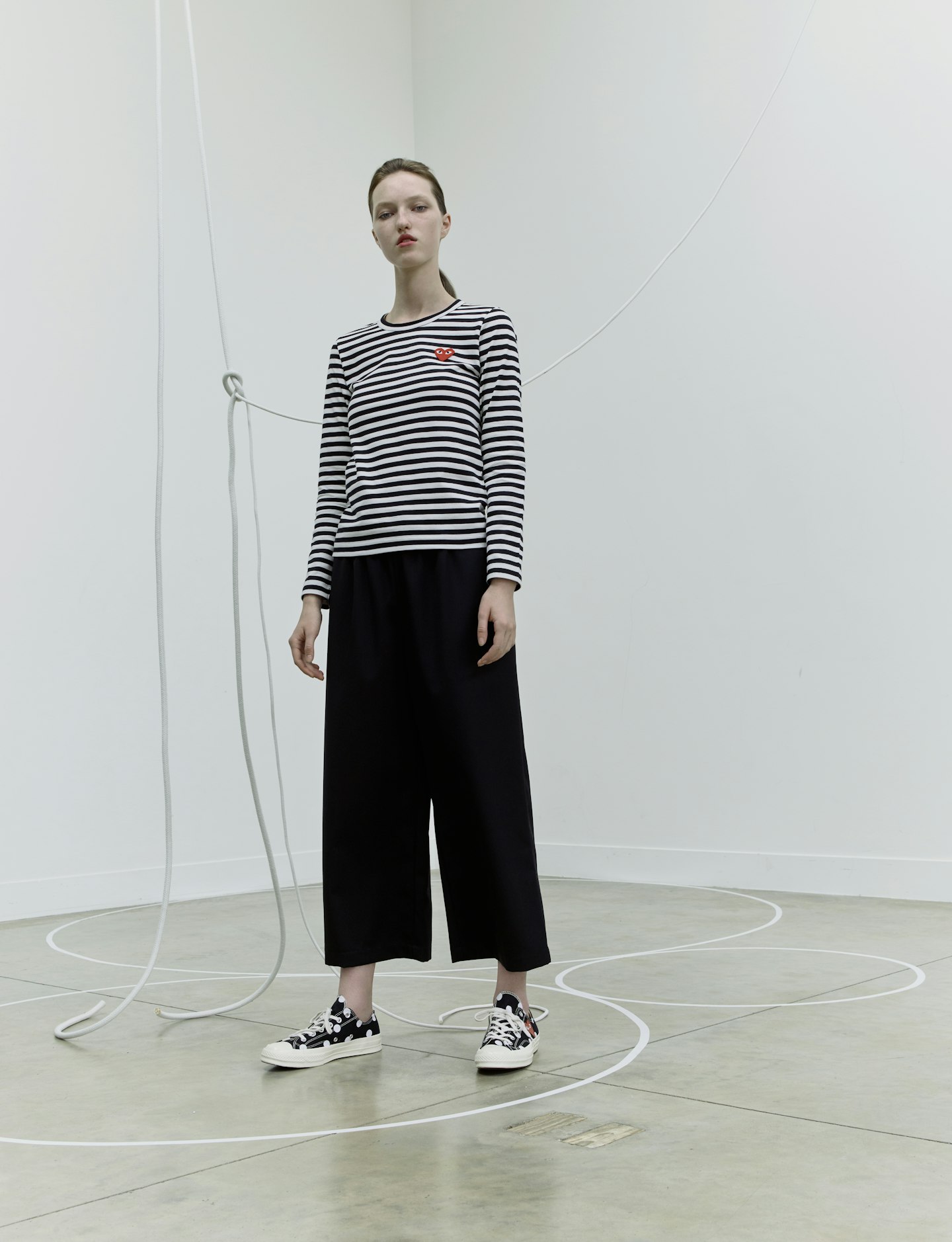Fact: Rei Kawakubo is the most uncompromising designer in the world. The most inscrutable. The most influential. Often the most controversial. And certainly the most revered. Other designers have called her the Mother of Fashion Creation – for her visionary catwalks that show no clothes, her staggering business brain that has allowed her to helm a $280 million business and for her vision and support of so many of today’s breakout stars.
To that end, in a major acknowledgement of her art, Kawakubo, 74, has allowed herself to become the latest subject of the Metropolitan Museum of Art in New York – the reality of which is mind-blowing on many levels. First, she is a living designer, a rarity, since the last and only living designer to be recognised by the Museum was Yves Saint Laurent in 1983. She is enigmatic to the core – trying to imagine her Sphinx-like tininess on the red carpet at this week’s Met Gala, blitzed by paparazzi, dressed in her signature black leather jacket, white shirt and full skirt, is to picture a woman distinctly out of her element. And not least, the exhibition itself – Rei Kawakubo/ Comme des Garçons: Art Of The In-Between – is, by its very nature, a retrospective, looking back at much of her life’s work, and Kawakubo is all about looking forward and her endless, self-enforced search for the new. ‘If she could’ve done the show herself she would have only shown the last seven collections, but eventually she accepted the fact that everyone wants to see the old things. I convinced her by saying if you don’t do it yourself, it won’t be the way you want it done,’ explains Adrian Joffe, president of Comme des Garçons and Kawakubo-san’s husband of 25 years.

Adrian is the closest one ever gets to Rei – it is always through him that Rei speaks. They first met in Paris in 1987. He, a zen Buddhist who’d studied Japanese and Tibetan languages at SOAS (London’s School of Oriental and African Studies), had been asked by a mutual friend to come to Paris to translate for her. She, having set up her business, Comme des Garçons, in Tokyo in 1969 and already known as fashion’s most provocative rebel, having stormed the Paris fashion establishment in 1981 (‘when people said she was mad and wanted to lock her up’), was in search of a new commercial director and offered Adrian the job. Little is known of their personal life together, but today he tells me they married in 1992, in a town hall in Paris’s third arrondissement. ‘She wore a white poplin shirt and a lovely black frilly organza skirt,’ he smiles. ‘We had a nice lunch at the Palais Royale and went back to work – it was the time of the collection – and then we had a little party in the Ritz, because it’s opposite work, and all the staff came and that was it.’
'Anarchy is not something she likes at all; Comme des Garçons may look anarchical, but she [has always been] a rebel with a cause.’
We are sitting in a bright white conference room in Comme HQ on London’s Charles II Street, a stone’s lob from the company’s Dover Street Market store on Haymarket. I’ve come to Adrian, 64 – dressed in black beanie hat, leather jacket, jeans and pointy heavy-soled Dr Martens – to help me fathom the unfathomable. Why fashion is so enthralled with Comme des Garçons. Why Rei is fashion’s biggest deal. ‘These are the questions we never feel comfortable answering, that’s for others to decide, we’ve never been good at blowing our own trumpet,’ says Adrian, typically. Allow me to attempt to explain, then: it starts with the electricity-charged shows in Paris that, despite thousands of requests, this season in particular, only ever seat 300 (‘a total nightmare’, he smiles). In fact, they are less fashion show, more powerful performance art where it is not unusual to see even the most hardened journalist swiftly brush away a tear. Whether that is because we are so rarely given the chance to think beyond the blah blah of silhouettes, the wearability of this and practicality of that, or whether it’s the joy of seeing the live event, a moment of pure creativity – evocative, emotional and often, to me at least, threaded with sadness – that cannot ever really be reproduced over the internet or an Instagram post, it’s a treat to be expected to rise to the conundrum. Especially because Kawakubo’s collections are so hugely open to interpretation: for the last eight seasons, she has given up on showing actual clothes – with functioning armholes, trouser legs and so on – and instead sculpts pieces that only vaguely resemble clothing, but on a supersized scale. Inevitably, there’s a message behind the gigantic brown paper cocoon, padded cages, shapes as at as pancakes and what may or may not be a bride wrapped in white with her hands knotted together. But the only clue we’re given is a head-scratchingly opaque word or phrase delivered by Adrian – ‘the void is important’, say, ‘invisible clothes’ or ‘the future of silhouette’ – and off we’re all sent to try to figure it out.

So how does fashion’s Einstein deal with the pressure of the twice-yearly show schedule and, as Adrian puts it, ‘finding those empty spaces in her head to have a totally new idea that doesn’t come from anywhere. It’s constant, every waking moment, every night, every sleeping hour for all I know. Inspiration can come at any time – on the train, bus, crossing the road – daily life. It could be a crushed up paper in the waste basket, a window frame; it doesn’t come from obvious places, it’s like random electricity.’ The poignancy of all this is that she is never satisfied with the result. ‘She sets her standards so high, when she’s struggling, going through hell for another collection, you know, I see it very close, and she thinks she can’t do it, she always wants to cancel the day before the show: it’s never right, never good, and I’ve asked her, “Why do you feel the need to reinvent the wheel every single time?” And she says it can’t be any other way.’ She is, he agrees, full of contradictions. ‘When she founded her company 48 years ago, it was because of a desire to be free and independent of the system. She saw how Japan was; she’d lived through the occupation and yet today, she is not free at all. Without those restraints, the six monthly cycle of shows, she’s afraid she wouldn’t be able to do it, she needs those rules, that torture.’
According to Adrian, the only time she was ever happy with a collection was, arguably, her most controversial – spring/summer 1997’s Body Meets Dress, Dress Meets Body, otherwise known as her ‘lumps and bumps’ collection, in which dresses clung to bodies in a series of Quasimodo-like mounds. ‘The reaction was exactly what she expected and she was thrilled with the terrible reviews! As much as the amazing ones.’ So, whose judgement does she fear most, I ask him, the audience’s or her own? ‘She is her biggest critic,’ he says.

On the face of it, Comme des Garçons is the most bafflingly avant-garde fashion in the world. But what resembles anarchy from the outside is, in fact, a beautifully balanced business, accessible to all – as our shoot here demonstrates, from wallets, perfume and sneakers, to the supremely wearable mini collections. There are 17 lines in all. Looking at all her unwearable oddities, you might be surprised to see their spirit reinterpreted in such simple garments, and to learn that they actually sell – very well. CDG Group’s net turnover stands at $280m.
‘Anarchy is not something she likes at all; Comme des Garçons may look anarchical, but she [has always been] a rebel with a cause.’ It’s like a train, he explains, the engine is the ‘pure creation’ (the show collection) that pulls the rest of the carriages behind. Entirely self-funded and self-governed, the business has always been as vital and uncompromising as the creation, inextricably linked and embedded in the company’s DNA. Be it the 120 Comme stores worldwide, the Dover Street Market superstores (there will be five come July) or the agile Black Market pop-up shop that’s about to open in Tokyo – all of which house fashion’s most creative designers, who perceive Rei Kawakubo as not just the Mother of Fashion Creation, but as having the ultimate business template. ‘There’s just one strong, unwavering all-seeing eye that goes through everything. That, for me, is the secret of its uniqueness and its success,’ says Adrian, adding somewhat unnecessarily with a smile, ‘you know, she really is the epitome of a control freak.’

He tells me she lives two minutes from work. Her apartment in Tokyo is the only thing she owns; a sparse white space because ‘she doesn’t like to own anything’, and she collects no art ‘because if she owns it other people won’t be able to enjoy it’. She walks to work and arrives every morning at 7am, then reads the daily reports from her stores in Japan – all 37 of them. In faxed form (‘she doesn’t encourage personal emails in the workplace’), they telegraph their results, but more importantly, let her know who came in and what they said – she replies to each one personally because, as she tells Adrian, ‘they expect it’.
And so back to the Met – the timing of which could not feel more relevant: the must-see exhibition (with attendance figures expected to surpass that of McQueen’s Savage Beauty) promises to be a thunderbolt of raw anti-establishment creativity at one of America’s most prestigious museums in a year when Trump and right wing conservatism came to power. And could it be that this is her swansong, I venture? Will she – I hesitate – ever retire? ‘It’s a very big subject between us,’ says Adrian carefully, ‘I can’t imagine anyone else designing Comme des Garçons, it’s inconceivable. She can’t imagine retiring, but it’s inevitable, she’s not immortal! As Rei likes to say, she’s a very normal human being – everybody laughs when she says this, of course. But she insists she is very ordinary.’
READ MORE: Met Gala 2017: The Best Dressed List
